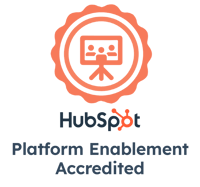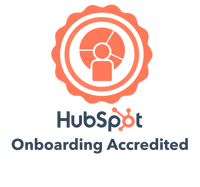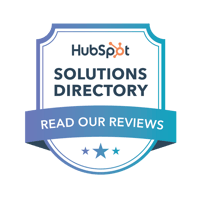It's important for your website to look good. But it also needs to work hard.
Design is what gets your website noticed. SEO (and increasingly, AIO) is what gets your website found. The right design choices make your website discoverable, valuable, and a true lead magnet.
Design and SEO go hand in hand when it comes to building a site that attracts visitors and keeps them engaged. In this guide, I’ll walk you through 20 SEO web design tips that do just that. Each one is practical, tested, and focused on creating a faster, smoother experience for your visitors while giving search engines what they need to rank your site higher.
Related Content: Top 10 Reasons Your Business Needs a Website Redesign
1. Understand the Principles of SEO-Friendly Website Design
SEO has changed a lot in the last decade. It used to be about stuffing keywords on a page and having the most links pointing back to your site. Today, Google’s goal is to give the best possible answer to a specific user’s question. That means two people can type in the exact same query and see different results. One may be looking for a quick definition. Another may need a deep-dive guide. Intent shapes the outcome.
Related Content: Why You Should Use Topics, Not Keywords
When you design with SEO in mind, you're not just crossing items off a checklist. You're building a site that understands context, adapts to user intent, and delivers a smooth experience. That is what makes a website truly SEO-friendly: it works for search engines, but more importantly, it works for the real people behind the search.
2. Design Mobile-First and Ensure Responsiveness
More than half of all internet traffic comes from mobile devices, and Google now uses mobile-first indexing. That means it looks at the mobile version of your site before the desktop version when ranking results. If your site is clunky, slow, or unreadable on a phone, you are missing opportunities.
Responsive design adjusts layouts, buttons, and images based on screen size. Clear fonts, high-contrast colors, and balanced spacing make your content easy to scan. A mobile-first approach also forces you to prioritize what matters most. On a small screen, clutter is obvious. Get mobile design right, and your site will look great on both mobile and desktop devices.
3. Make Accessibility a Core Part of Your Web Design
Accessibility is about creating a website that works for everyone. Alt text on images, transcripts for videos, and clean heading structures help users who rely on screen readers. High-contrast color palettes support people with poor vision. Keyboard navigation ensures content is usable without a mouse.
As far as SEO goes, accessibility is important because Google looks at these signals too. Because Google can't necessarily "read" a website in the same way a person might, it relies on the same accessibility standards designed with screen readers in mind.
When you design inclusively, you not only expand your audience, you also strengthen your search visibility. Accessibility is SEO.
When creating your website with accessibility in mind, I recommend following WCAG 2.2 guidelines – these provide a clear list of action items to apply to your design and content.
4. Optimize Site Speed and Performance
Slow sites kill conversions. Google has said for years that speed is a ranking factor. Tools like PageSpeed Insights, WebPageTest, and SEMRush let you test your load times and see what needs work.
Start with the basics: compress images, enable browser caching, and use lazy loading so media only appears when users need it. Every second counts. Studies show even a one-second delay can lower conversions. A fast site makes for a better user experience and stronger SEO.
5. Build Clear, Intuitive Navigation
Navigation is how visitors move through your site. If they can't find what they need, they will leave. Keep menus simple and logical. Use descriptive labels instead of vague phrases. Look at your competitor's websites and those outside of your industry to see how they structure their navigation. You'll likely discover commonalities in language and logic.
Good navigation also benefits search engines. A clear structure makes it easier for bots to crawl and index your site. Generally, I recommend trying to keep menu items to no more than two levels deep. This makes it easier for users on mobile to find what they need without having to tap multiple times. Setting up the navigational structure of your site could be an entire deep dive by itself. I like this article from The Good that breaks it down into a few core concepts.
Think of navigation as the roadmap for both users and Google. When it is intuitive, everyone gets where they need to go.

6. Create Strategic, SEO-Friendly URL Structures
URLs are small but powerful. A clean URL tells both people and search engines what the page is about. A messy one with random numbers or duplicate paths creates confusion.
Best practice is to keep URLs short, descriptive, and keyword-friendly: in that order of priority. Use hyphens instead of underscores. Avoid unnecessary parameters when possible.
For example, bizzyweb.com/website-design is clear and scannable. Something like bizzyweb.com/SEO-optimized-website-design is NOT. While the second option does add in some keywords, I'm sacrificing clarity and memorability to stuff those in there.
Strategic URLs make your site easier to crawl and improve click-through rates in search results.
7. Map Out Intent for Each Page and Blog
Every page and blog on your website should be designed for a clear intent. You'll typically want to do this during the writing process. Generally, your blogs or pages will fall into one of the following categories:
- Informational: A user reaches this content because they want to learn about something.
- Commercial: A user reaches this content because they're researching options before making a purchase.
- Transactional: A user reaches this content because they're ready to take an action (like making a purchase).
Typically, most of the blogs on your website will be informational or commercial. Your service pages are likely to be commercial or transactional. Industry pages are likely to be informational or commercial. Landing pages are likely to be transactional. It's all about what the user wants.
8. Use On-Page SEO and Content Hierarchy Effectively
Headings guide both readers and search engines. Your H1 should match the page’s core topic. Subheaders (H2s and H3s) should break down supporting points. Bulleted lists make key ideas easy to scan.
On-page SEO also means aligning content with search intent. Answer the questions people are asking. For example, when users search “five important concepts of SEO,” they want to see a list of five important concepts of SEO. They don't want to read a giant wall of high-concept philosophical text.
Use your hierarchy to deliver that clarity. Organized pages perform better in rankings and provide a smoother experience for visitors.
9. Lay Strong Technical SEO Foundations
Behind every good site is solid technical work. Add an XML sitemap so search engines can find your pages. Use robots.txt to guide crawlers. Set canonical tags to avoid duplicate content issues.
As AI becomes more common, files like llms.txt are emerging to tell large language models how they can use your content. These details may feel hidden, but they build a foundation that supports everything else. Without technical SEO, even the best design will struggle to perform.
These technical foundations can get overwhelming quickly. Check out Google's developer guidelines for a detailed breakdown of each of these elements and how to implement them correctly. (Or just hire BizzyWeb to do it for you.)
10. Use Schema Markup and Structured Data
Schema markup adds context to your pages. It tells Google if a page is a recipe, a product, a review, or something else. With the right schema, your site can show up with "rich" results like star ratings, FAQs, or event listings. How you implement schema depends on the specific CMS you use to create your website. Your best option to figure out how to implement schema is by contacting your web developer.
Structured data makes your content easier to understand and more likely to be featured in AI summaries. Implement schema on key pages and test it with Google’s Rich Results tool. The more context you provide, the more ways your content can be discovered.
11. Stay Current with SEO Best Practices
SEO is not static. Algorithms evolve. User expectations rise. What worked a few years ago may be outdated now.
Stay current by following industry publications, attending webinars, and testing your own data. SEO is not a one-and-done project. It's ongoing work that keeps your site competitive. Here are some of my favorite resources for staying up to date with SEO:
- BizzyWeb's blog. We have to promote ourselves, right?
- Search Engine Journal
- Search Engine Land
- Neil Patel's blog
- Aleyda Solis' blog
- Nathan Gotch's YouTube Channel
- Google's Search Central
- Ahrefs Blog or YouTube Channel
Most of these places have options to subscribe to a newsletter, so you can get the digest delivered to you.

12. Adapt Your Website for AI and AI-Powered Search
AI search is changing how people find answers. Google’s AI Overviews and tools like Gemini and ChatGPT summarize content instead of just linking to it. That means your site must feed AI with clear and authoritative information.
The good news is that SEO best practices help with AI search as well. AI systems rely on high-quality content written for specific users and with specific intent in mind. That lines up with everything I've covered so far on your SEO recommendations.
If you're looking to optimize your content specifically for AI search, you'll want to look at creating content that's scannable, concise, and follows a question-answer format. HubSpot has a great guide that walks through specific formatting for enticing AI search engines.
Related Content: What is Loop Marketing? Marketing in the AI Era
13. Strengthen Internal Linking Strategies
Internal links guide visitors through your site. They also help search engines understand how the pages and blogs on your website relate to a given topic.
When creating content, link to related articles, product pages, or resources. Use descriptive anchor text instead of vague phrases like “click here.” Balance is important. Links should feel helpful, not forced. When done right, internal linking creates a web of content that supports both SEO and UX. If you scan through this blog with internal linking in mind, you'll see a few examples of each of the above tips!
14. Use External Links to Build Credibility
External links show you are part of the larger conversation. Linking to trustworthy sources signals credibility to both readers and search engines.
Choose links carefully. Reference authoritative sites that add value. Don't just link an article for the sake of linking something. Take a second to read through it. Do you trust the source? Do you think the information provided is useful? Start there when establishing authority.
External links are not about sending people away. They're about building trust in your own work.
Pro Tip: Whenever you link to an external website, choose "open this link in a new window." That keeps your website open for the user, while also directing them to the external site.
15. Avoid Common SEO Web Design Mistakes
Even good marketers make SEO mistakes. The problem is that they can add up fast. Here are a few of the most common issues to watch for:
- Too many animations or pop-ups. Flashy elements slow your site down and annoy visitors.
- Keyword stuffing. Forcing keywords into every line makes content hard to read and signals spam to Google.
- Duplicate content. Copying the same text across multiple pages confuses search engines and waters down your authority. Having the same section on multiple pages is fine. Having multiple pages where the text is 80% or more the same is not.
- Non-optimized images. Large files drag down load speed and hurt performance. This is the number one speed issue that trips up even the most seasoned of marketers.
- Thin content. Pages with very little useful information fail to meet user intent or provide value. It's better to have only a few, strong pages on your site instead of many, weak pages.
Avoid these traps by designing cleanly and writing naturally. Audit your site regularly for errors. Test changes before rolling them out. Mistakes drag down performance, but fixing them keeps your site strong.
16. Keep Google EEAT Signals in Mind When Creating Your Site
Google looks at Experience, Expertise, Authoritativeness, and Trustworthiness when ranking content. These signals help determine if your site is worth showing to users.
Showcase authorship with bylines and bios. Add testimonials and reviews. Highlight certifications or awards. The more proof you give that your content is trustworthy, the stronger your rankings will be. EEAT is about showing that real people with real expertise stand behind your site.
I wrote a guide all about EEAT, if you want to dig into it in more depth: What is EEAT: The Inbound Marketing Powerhouse You Can't Ignore

17. Optimize Multimedia for SEO and UX
Images, videos, and graphics bring your site to life, but they must be optimized for both SEO and user experience (UX). Use descriptive file names and alt text. Compress images to improve load speed. Host videos on a platform that will not slow your site – like YouTube – but embed them on your site for ease of access.
Multimedia should enhance the experience, not hurt it. Optimized content keeps your site engaging and fast, which improves both SEO and user satisfaction.
18. Design Calls-to-Action That Support Both UX and SEO
Calls-to-action (CTAs) guide visitors toward the next step. A CTA should be clear, natural, and aligned with the page content.
Placement matters. A button in the right spot keeps users moving through the funnel. Wording matters too. Strong verbs and simple language work best.
CTAs should also feel like a natural next step in the buyer's journey. Asking someone to sign up for a demo makes sense on a product page, but it might not make sense on an informational blog.
19. Set Up Analytics and Tracking from Day One
SEO is wasted if you can't measure results. Set up Google Analytics 4 and verify your site in Search Console to ensure you can track performance.
Tracking gives you the data to prove ROI. It shows which pages drive traffic, which CTAs convert, and where users drop off. With analytics in place, you can tie design decisions to outcomes. That is what leadership wants to see.
If you build your site on HubSpot, you'll have several built-in SEO analytics tools so you don't have to do any heavy lifting.
Related Content: 15 Pre-Built Reports to Add to Your HubSpot Dashboard
20. Choose the Right CMS
Your content management system (CMS) affects SEO more than you might realize. The easier it is for the people creating content to also do the behind-the-scenes SEO work, the better your overall SEO will be. An outdated CMS might even generate site speed issues that drag your site down.
HubSpot is a strong choice because it has built-in SEO tools. Whatever CMS you choose, make sure it aligns with your SEO goals. The system behind your site can either accelerate growth or hold you back.
Related Content: The Benefits of HubSpot CMS for B2B: A Game Changer
Creating a site that gets found online isn't just about chasing trends. It's about building a site that delivers the best possible experience for your audience. When your design is fast, accessible, and intentional, you give search engines every reason to rank you higher. When your content is structured and clear, you give visitors every reason to stick around and take action.
Start with the basics, then build layer by layer. Even small improvements in speed, accessibility, or structure can make a big impact on visibility and conversions. The bottom line: design for people first, optimize for search engines second, and you will end up with a site that performs on both fronts.
SEO Web Design Services
Your website is the most important part of your online marketing. It's the foundation from which everything else is built. We build websites on the two most powerful website builders: HubSpot and WordPress. If you need a hand with your site, let's talk!
Learn about our website design services here.
BizzyWeb is a Minneapolis-based digital marketing and web design agency that helps companies get the high-quality leads they need to grow and thrive. Our tactics include inbound marketing, SEO, advertising, web design, content creation and sales automation. We are an accredited HubSpot Diamond Partner and we offer full-service HubSpot onboarding, enablement and strategy for new and current users.





